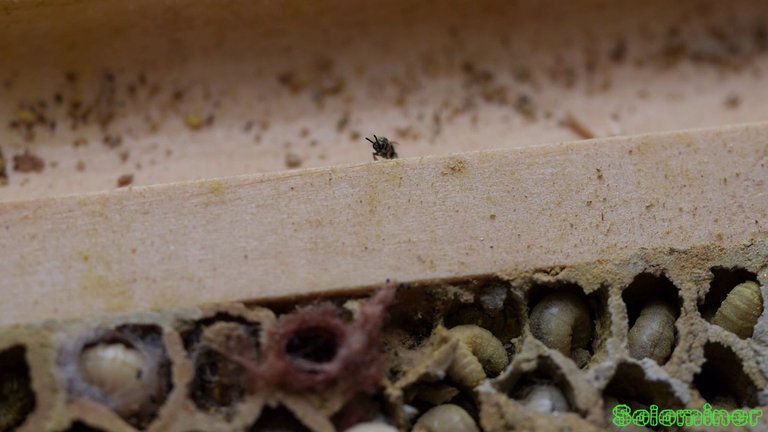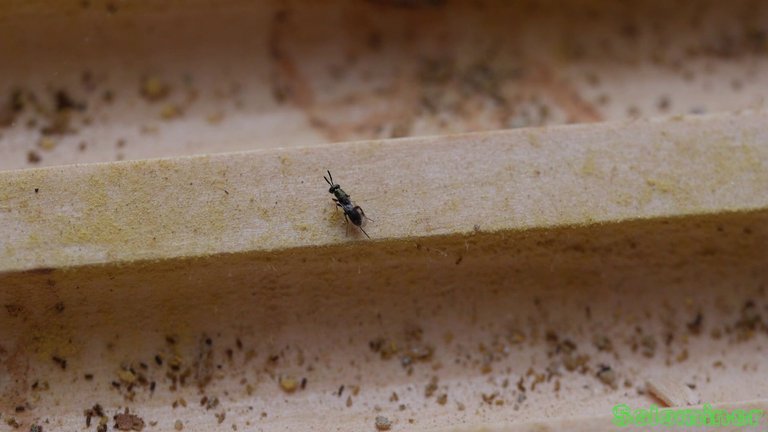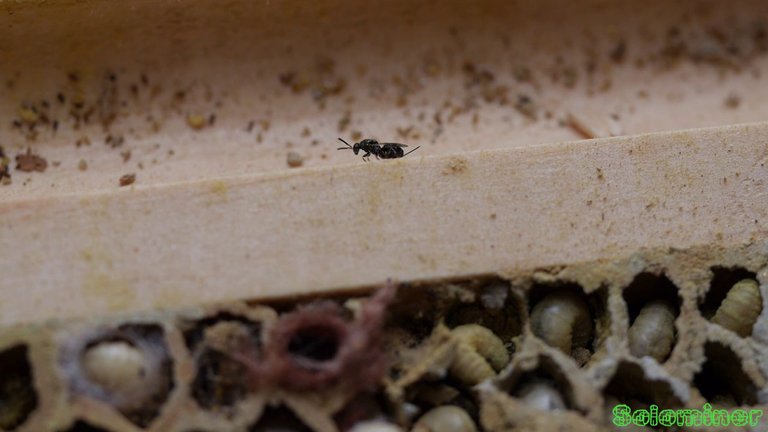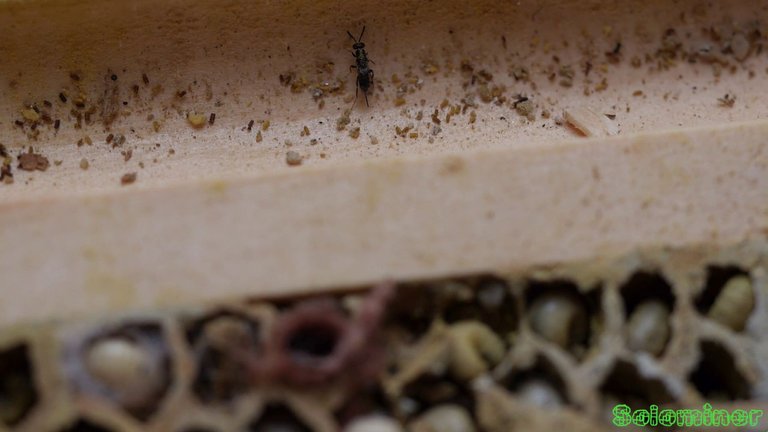Mono wasp observing Mason bee larva
Once the adult female Mason bees have finished their homes and left these tiny wasps try to move in. I had one of my boards separate during the transport of my most recent season of Mason bees. And leaving the board out I got to see the wasp finding its prey and patiently waits. Its too early for the wasp to do what it does to its prey, but it seems to be aware of the larva.

These specialist insects will go after certain kinds of insect larva. In this case some immature Mason bees during their pre-pupal stage.

Mono Wasps will break through the mud the female Mason bees use to seal off the larva, and then they will find mature cocoons that can be pierced and lay their own Mono wasp larva inside. These Mono wasp larva will then kill the pupating bee inside and dozens of wasps will emerge from a single cocoon.

As of the time of this video the larva are too young for the Wasp to lay its eggs, but it is aware of these now and will return once a cocoon has formed.

I wonder if the Wasp marks the location with some kind of scent, so it can find it again or more of its own kind.

The wasp just hangs around for about five minutes, seemingly just observing the squirming larva.

Once it has scouted the area it jumps away and finds another set of bee larva to tag for later use.
These wasps are one of the reasons I remove and clean the cocoons after the end of the season. I can discard cocoons that have been invaded by wasp larva using a bath in water and a little essential oil. If the cocoon is pierced it will sink and the water and peppermint oil will enter and kill the wasp larva. But if the cocoon is safe from the larva it can resist the oils and will float.
this is very interesting.
Yeah its pretty wild following the lives of these Mason Bees, I have learned alot from them.
Nice work with the pics, love it
thanks much, glad you liked them.